The Mainz XENON group is part of the research group on experimental particle and astroparticle physics (
ETAP: Experimentelle Teilchen und AstroteilchenPhysik) in the Institut für Physik at the Johannes Gutenberg-Universität.
Our research is focused on Dark Matter detection. Astrophysical observations tell us that about 85% of all matter in the Universe consists of a new and as yet unknown type of matter, so-called non-baryonic Dark Matter. Not only does Dark Matter not emit light, as the name suggests, but it is also completely transparent. What is the nature of this elusive Dark Matter? This is one of the central questions in physics today. We are addressing this question by searching for rare interactions of Dark Matter particles with regular matter in sensitive detectors. These detectors for direct search of Dark Matter are located deep underground to shield them from cosmic rays.
XENON homepage
May 28th, 2018
XENON1T probes deeper into Dark Matter WIMPs, with 1300 kg of cold Xe atoms
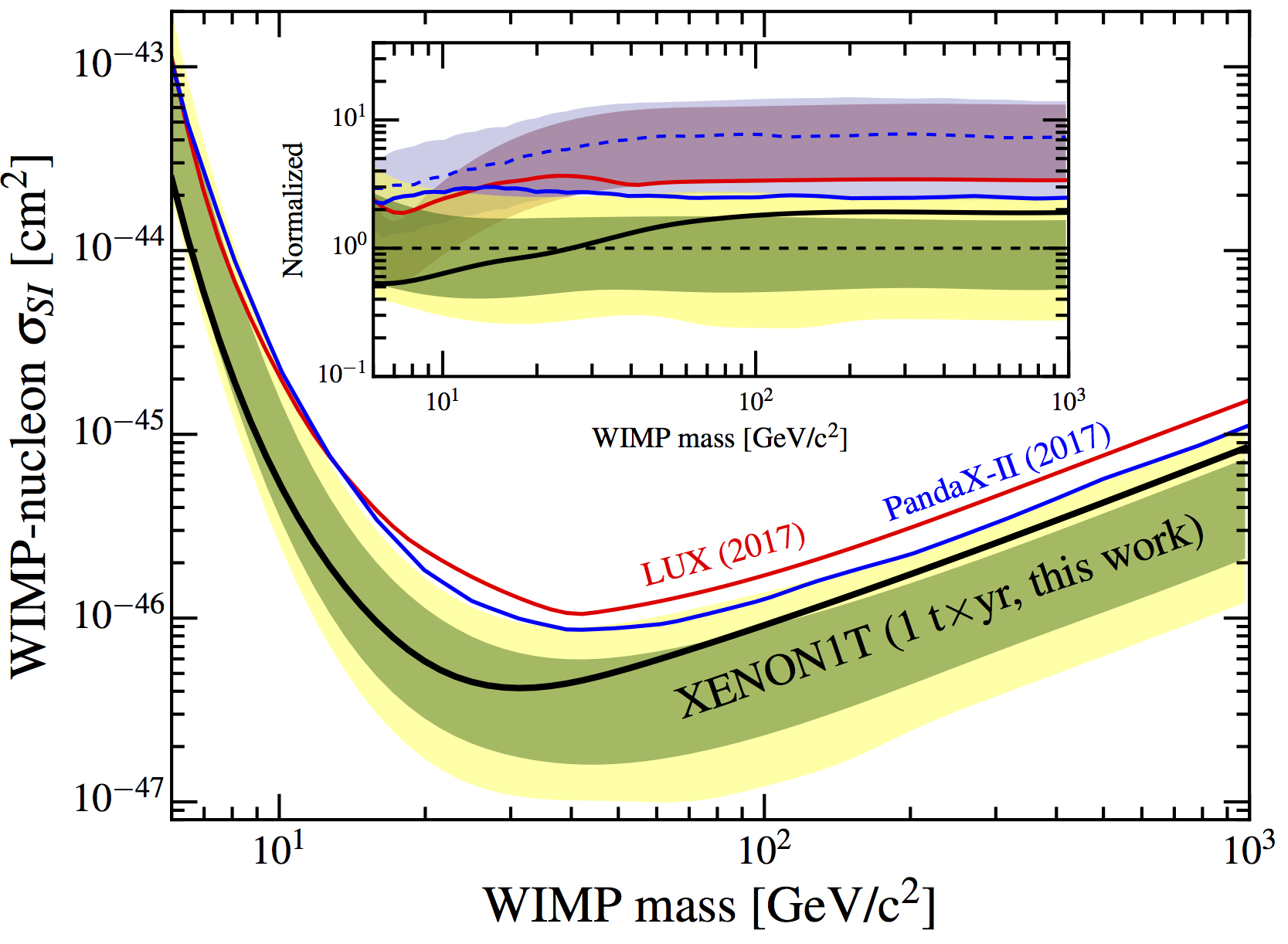
|
|
90% confidence level upper limit on the spin-independent WIMP-nucleon cross section from the XENON1T most recent published results. The limit (black line) is shown as a function of the WIMP mass together with XENON1T 1- and 2σ sensitivity bands (green and yellow bands, respectively), and most recent results from LUX (red line) and PandaX-II (blue line).
|
Results from XENON1T, the world's largest and most sensitive detector dedicated to a direct search for Dark Matter in the form of Weakly Interacting Massive Particles (WIMPs), were reported on May 28th by the spokespersons, Prof. Elena Aprile of Columbia University and Prof. Manfred Lindner of Max-Planck-Institut für Kernphysik in seminars at the hosting laboratory, the INFN Laboratori Nazionali del Gran Sasso (LNGS), in Italy and CERN, respectively. The international collaboration of more than 165 researchers from 27 institutions, has successfully operated XENON1T, collecting an unprecedentedly large exposure of about 1 tonne x year with a 3D imaging liquid xenon time projection chamber. The data are consistent with the expectation from background, and place the most stringent limit on spin-independent interactions of WIMPs with ordinary matter for a WIMP mass higher than 6 GeV/c². The sensitivity achieved with XENON1T is almost four orders of magnitude better than that of XENON10, the first detector of the XENON Dark Matter project, which has been hosted at LNGS since 2005. Steadily increasing the fiducial target mass from the initial 5 kg to the current 1300 kg, while simultaneously decreasing the background rate by a factor 5000, the XENON collaboration has continued to be at the forefront of Dark Matter direct detection, probing deeper into the WIMP parameter space.
WIMPs are a class of Dark Matter candidates which are being frantically searched with experiments at the Large Hadron Collider, in space, and on Earth. Even though about a billion WIMPs are expected to cross a surface of one square meter per second on Earth, they are extremely difficult to detect. Results from XENON1T show that WIMPs, if they indeed comprise the Dark Matter in our galaxy, will result in a rare signal, so rare that even the largest detector built so far cannot see it directly. XENON1T is a cylindrical detector of approximately one meter height and diameter, filled with liquid xenon at -95°C, with a density three times that of water. In XENON1T, the signature of a WIMP interaction with xenon atoms is a tiny flash of scintillation light and a handful of ionization electrons, which themselves are turned into flashes of light. Both light signals are simultaneously recorded with ultra-sensitive photodetectors, giving the energy and 3D spatial information on an event-by-event basis.
In developing this unique type of detector to search for a rare WIMP signal, many challenges had to be overcome; first and foremost the reduction of the overwhelmingly large background from many sources, from radioactivity to cosmic rays. Today, XENON1T is the largest Dark Matter experiment with the lowest background ever measured, counting a mere 630 events in one year and one tonne of xenon in the energy region of interest for a WIMP search. The search results, submitted to Physical Review Letters, are based on 1300 kg out of the total 2000 kg active xenon target and 279 days of data, making it the first WIMP search with a noble liquid target exposure of 1.0 tonne x year. Only two background events were expected in the innermost, cleanest region of the detector, but none were detected, setting the most stringent limit on WIMPs with masses above 6 GeV/c² to date. XENON1T continues to acquire high quality data and the search will continue until it will be upgraded with a larger mass detector, being developed by the collaboration. With another factor of four increase in fiducial target mass, and ten times less background rate, XENONnT will be ready in 2019 for a new exploration of particle Dark Matter at a level of sensitivity nobody imagined when the project started in 2002.
Professor Uwe Oberlack of the Institute of Physics at Johannes Gutenberg University Mainz is one of the founding members of the XENON program searching for dark matter. His group in Mainz is focused primarily on the analysis of data from the XENON Experiment as well as the development of simulations and novel, innovative detector technologies. The JGU-based astro-particle physicists are in particular responsible for the muon detector and are involved in the Xenon Recovery and Storage (ReStoX) system and the inner detector. In order to realize the next big step in sensitivity with the XENONnT upgrade, the Mainz group is working on the realization of a neutron detector, which will surround the inner dark matter detector. Oberlack's research is also a component of the "Precision Physics, Fundamental Interactions and Structure of Matter" (PRISMA) Cluster of Excellence that is being funded through the Excellence Initiative by the German federal and state governments to promote top-level research at German universities.
Additional information:
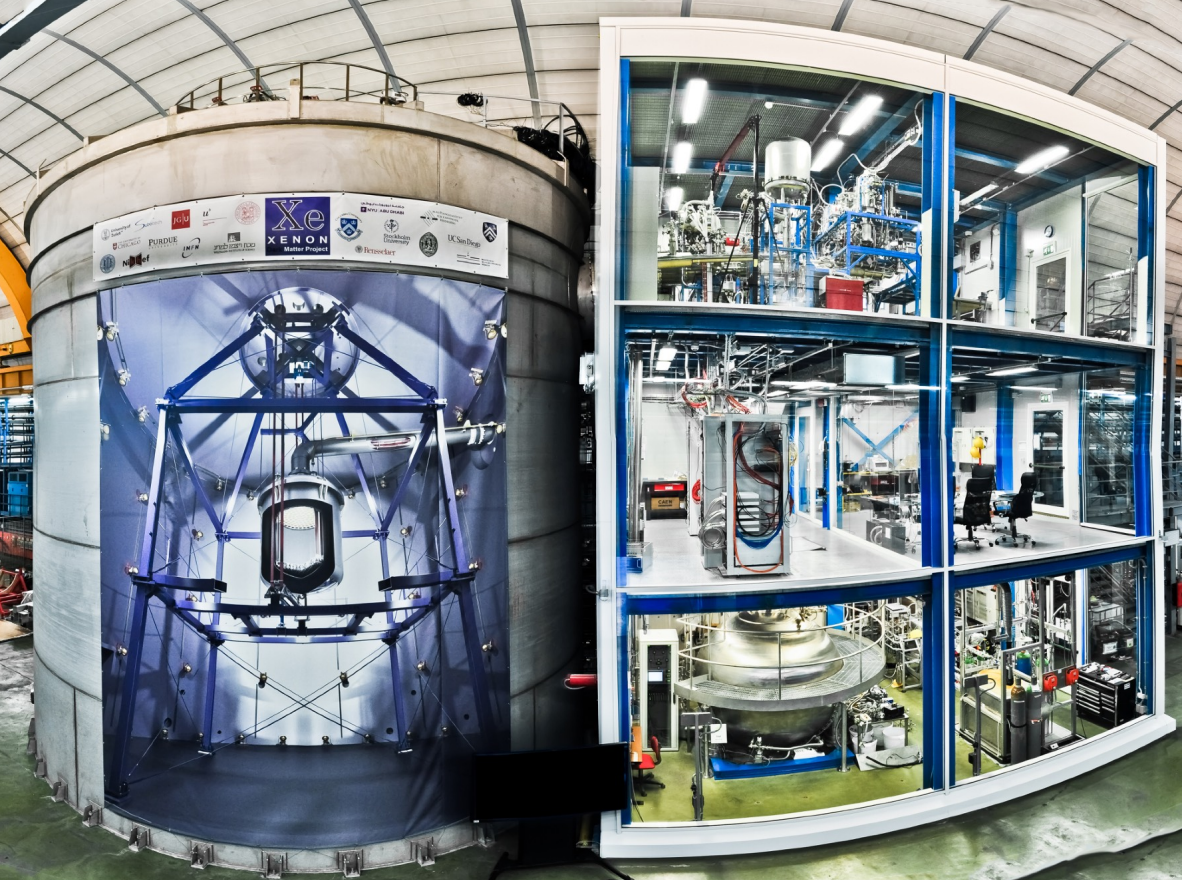
|
|
XENON1T installation in the underground hall of Laboratori Nazionali del Gran Sasso. The three story building houses various auxiliary systems. The cryostat containing the LXeTPC is located inside the large water tank next to the building. Photo by Roberto Corrieri and Patrick De Perio. © Roberto Corrieri, Patrick De Perio (XENON Collaboration)
|
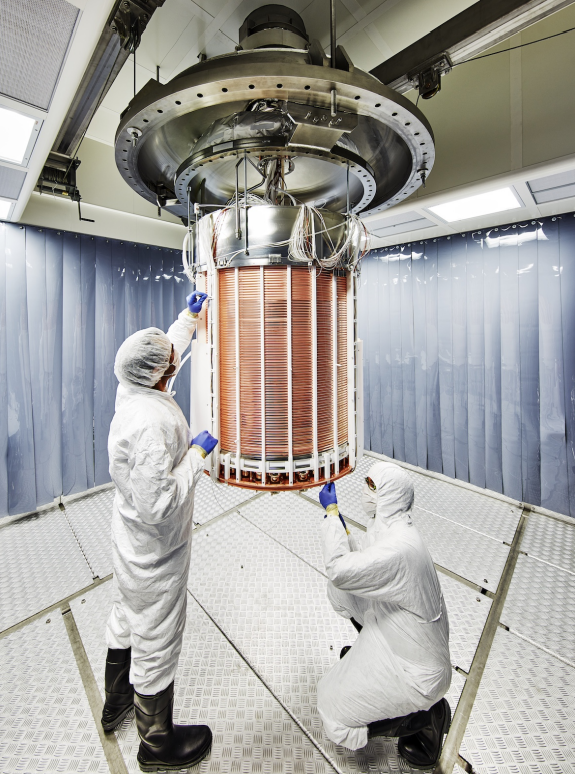
|
|
Construction of the XENON1T Time Projection Chamber © Enrico Sacchetti (XENON-Kollaboration)
|
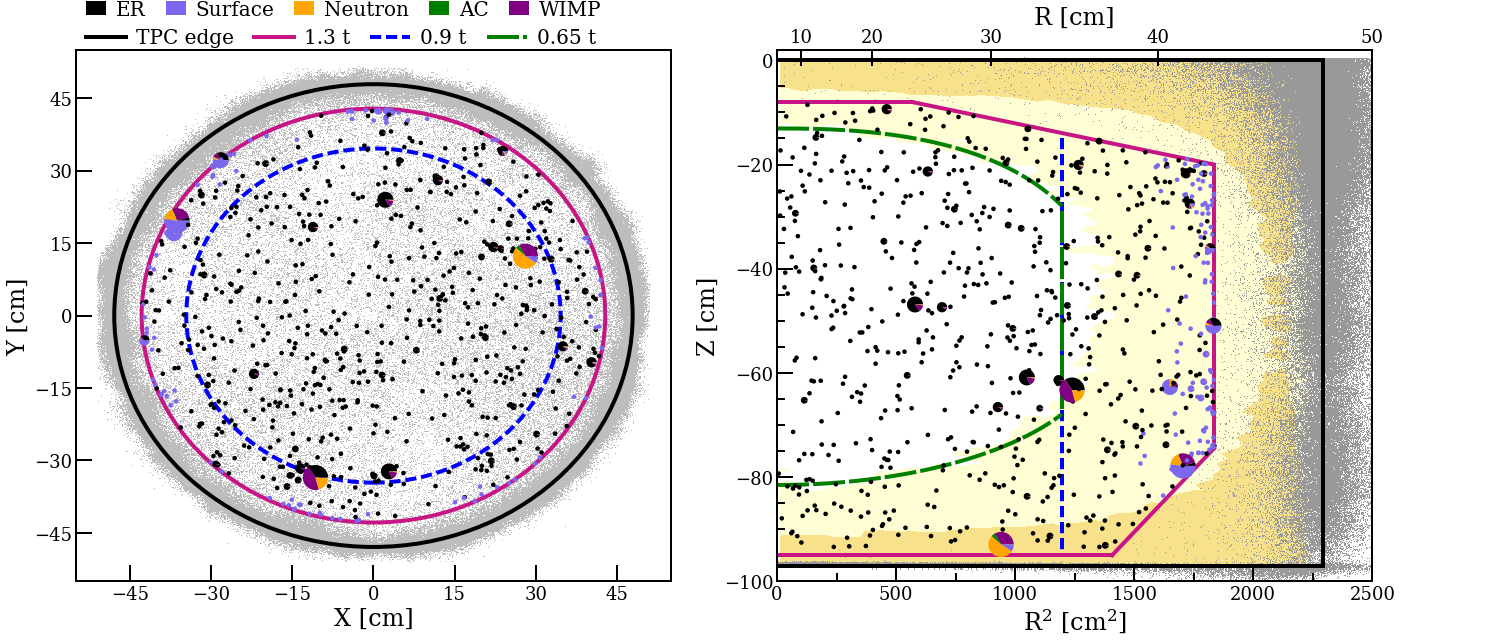
|
|
Spatial distributions of DM search data from the most recent XENON1T results. Details in the publication.
|
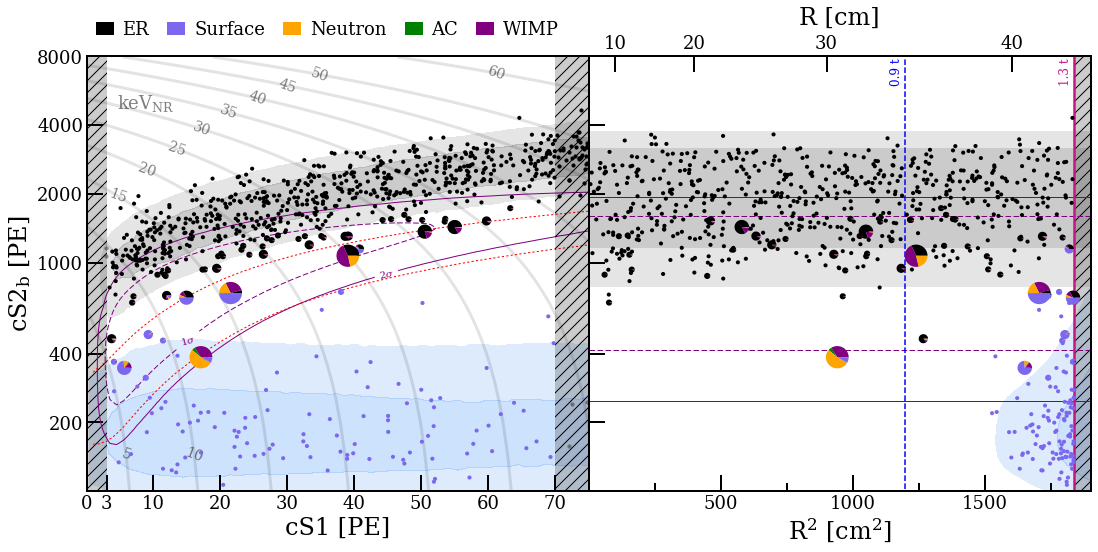
|
|
DM search data in the 1.3 t fiducial mass from the most recent XENON1T results. Details in the publication.
|